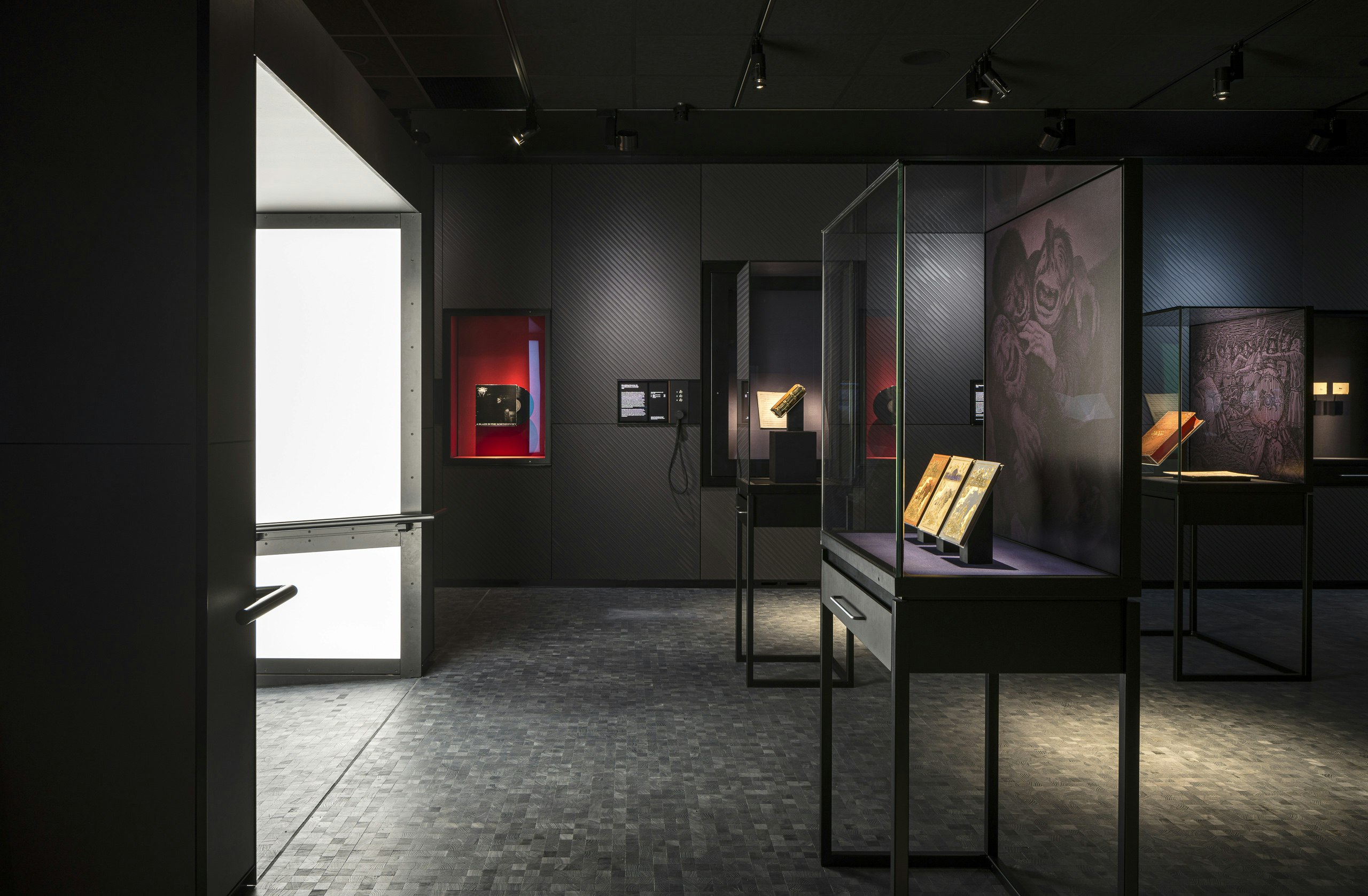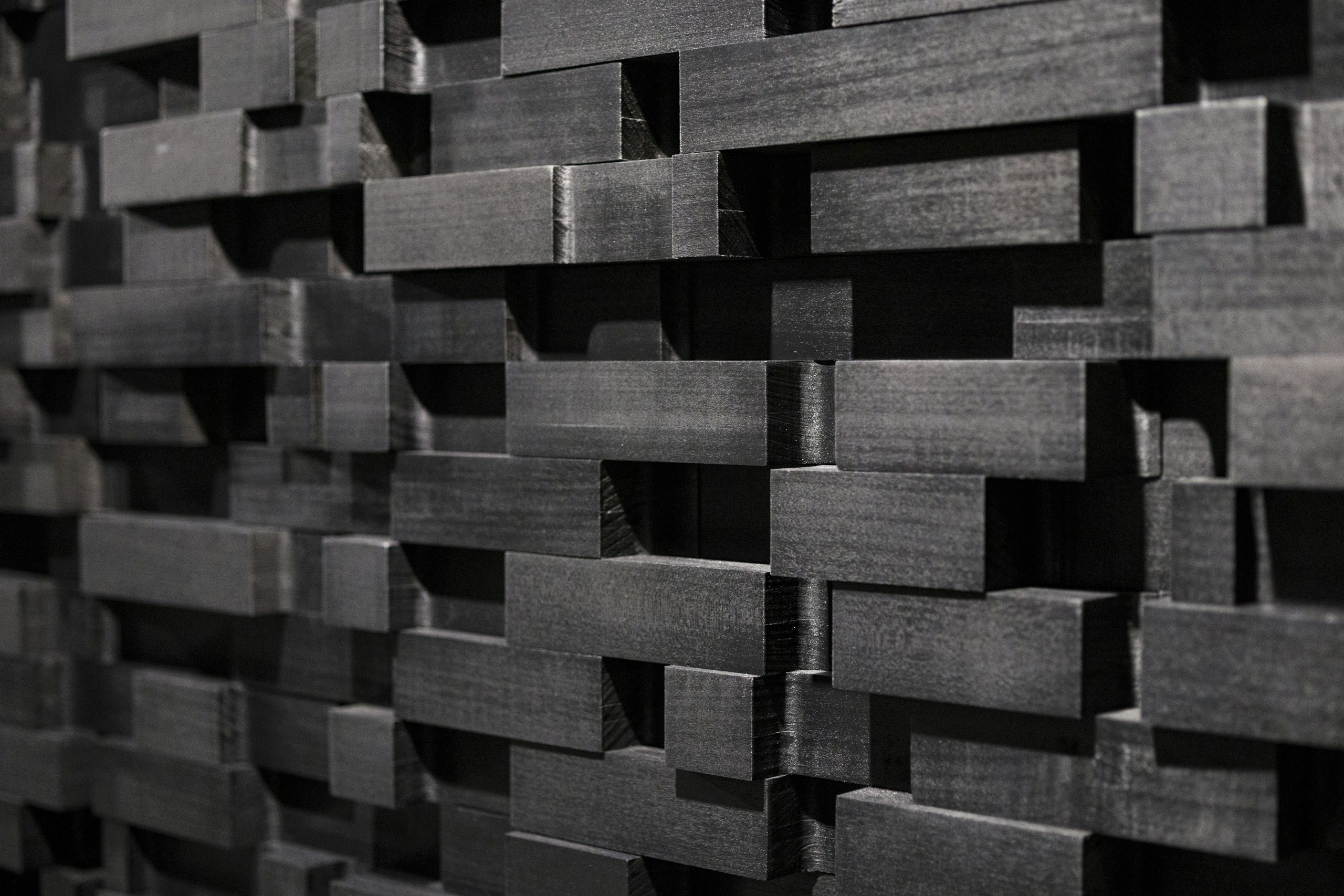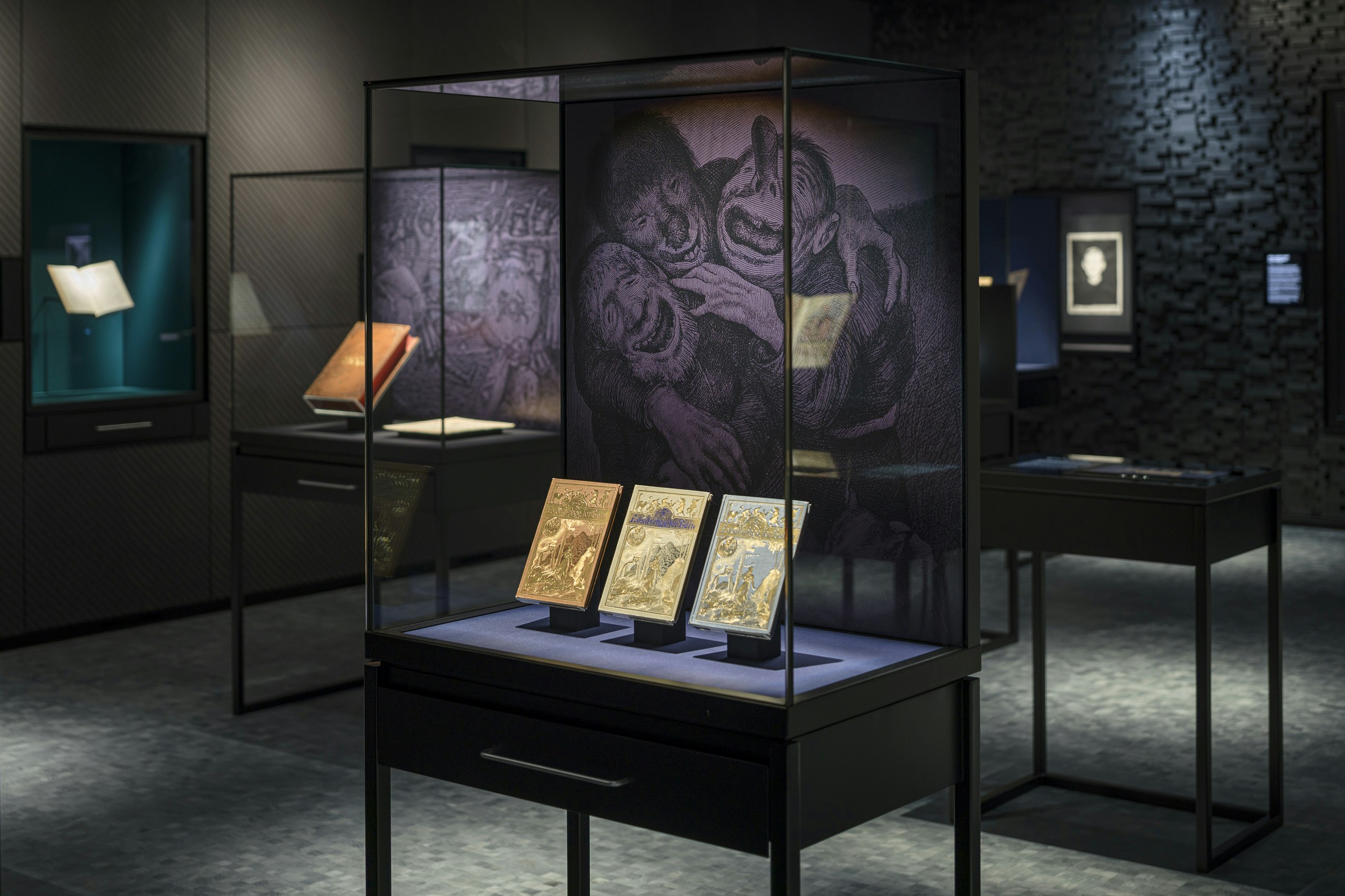Earlier this year I was commissioned by architect Nissen Richards Studio to photograph their stunning design for a new permanent exhibition at the National Library of Norway. Opplyst, meaning “Enlightened”, refers to the central concept of displaying 30 highly-significant objects from the country’s history, ranging from a 12th-century psalter to a Grieg piano concerto. Every surface and aspect of the richly-textured space was designed by Nissen Richards Studio to create a dramatic and immersive exploration of Norwegian history.
I recently enjoyed a socially-distanced conversation with Marte-Kine Sandengen, Head of Exhibitions at the National Library of Norway and curator for the Opplyst exhibition, and Pippa Nissen, director of Nissen Richards Studio. We discussed the exhibition, its design, and the photography shoot.
Gareth Gardner (GG): Marte-Kine, tell me about the importance of the library in terms of Norwegian life and identity?
Marte-Kine Sandengen (M-K S): The National Library of Norway collects, indexes and preserves for posterity Norwegian published knowledge and cultural production across all media. The collection therefore constitutes a unique knowledge base that represents our collective memory.
GG: What is the importance of Opplyst as a permanent exhibition of highlights from this collection?
M-K S: The exhibition Opplyst. Glimt fra en kulturhistorie (Enlightened. Glimpses of a Norwegian Cultural History) is an important tool to attract people to visit the library and to offer an insight into the development of the Norwegian culture. This exhibition brings a selection of unique, spectacular and significant pieces of Norwegian cultural history out from the shadows of the archives and into the spotlight. These items represent particular moments in our shared history, telling of great breakthroughs, creative masterpieces and crucial events that have shaped our capacity for expression and our nation itself.

GG: Was it difficult to distill Norwegian culture into a small number of exhibits?
M-K S: One challenge in this project was of course to settle on a selection of 30 objects out of a collection of several million objects. The selection process was time-consuming and involved a great number of the Library’s researchers and other staff members. The curatorial idea of not striving to tell one coherent or chronological story, but rather make it an eclectic assemblage of objects telling a multitude of stories of different times, historical events and social circumstances, was important in order to give the selection process a clear direction.
Pippa Nissen (PN): Unusually, the client wanted all the objects to be of equal standing and without hierarchy or chronology. The pacing of the room therefore was all about visitors finding their own paths through. This also ensured flexibility for the longer-term.
GG: How did the design emerge from this idea?
PN: Our initial concept was for the chosen objects to be floating, with the showcases rendered almost invisible. Whilst light and darkness were metaphors for the exhibition, including the concept of knowledge arising like light out of the darkness, they also became structuring devices.

GG: The result is a design that celebrates natural materials and texture.
PN: We had an idea about trying to create ‘full darkness’ and referencing the drawers in the library’s main storage facility – which is inside a mountain and accessed by robots – but this took some exploration with contractors, trying out different types of timber, stains, surface finishes, profiles, and ways in which they could be finished. We really wanted the whole project to feel as if was hand-crafted and also to have a sense of humanity to it. The partnership with the makers of the main elements really helped here, as we could strike a balance between craft and precision. Every surface in the exhibition has been crafted – the beautiful floor with end-grain timber, that has been painted and stained; the side walls that have an etched image; the back timber wall – all working together to create a space that is full of imagery and should spark the imagination of visitors.
M-K S: During the design and build stage, the high level of tailor-made solutions led to a tremendously high level of detail, which was a challenge with respect to co-ordination, as the project had quite a few contractors and sub-contractors. The impeccable finish that this degree of detail has resulted in is, however, very satisfactory, and important in terms of durability. This exhibition is built to last and will, according to our plan, live for some 20 years or longer.
PN: We really enjoyed how the client bought into the research and design process with us, jumping in at the deep end of exploration to find a new way of expressing an idea through materials. For example, the articulated back wall in the gallery space, which in the final result is a series of stained timber pieces, with different shapes, that fit together like a jigsaw.
GG: The lighting scheme, developed with Studio ZNA, is a very dramatic and dynamic element of the design.
PN: The lighting gradually washes across the whole room, and changes from a warm to a cool tone. This grazes across the etched walls and floor textures, so at particular moments these are heightened. The room seems almost alive as this happens, in a very slow way – a bit like being in a forest, or landscape.

GG: How did Nissen Richards Studio engage with Norwegian landscape and culture as part of this project?
PN: It was a wonderful journey for us. When we started, I remember going to the National Gallery, and trying to appreciate how Norway has been depicted in art through the centuries. There is a particular and subtle Norwegian style that is bold and sculpted, but also with particular light and colours that we began to discover, and which I love. We also spent a lot of time travelling and immersing ourselves in the culture, which was an inspiring experience.
The natural beauty of the country was something that we were overwhelmed with; the mountains, snow, clear skies, water – and the extraordinary way in which the extreme lighting conditions through the year affect your place in the world. How the midnight sun shapes the summer, and the darkness and snow the winter.
GG: With the project complete, what importance did Nissen Richards Studio place on recording the project through photography and other media?
PN: Photography is something we utterly depend on, as often our work is only up for a short length of time. We often work on projects for years, and they are up for months, so we only remember projects by the images that remain. Some of our early work, and in particular my work in the theatre in the 1990s, I only have a few photos of, and of some none at all! But now we really enjoy how photography can breathe new life into a project. I always find it quite painful to take photos, and so really rely on a photographer to make their own bold decisions about what vistas work well, or what details to capture. Often, we have been working really hard to get to the opening night, and so as we take the photos I am fixating on details, or snagging. The ideal moment to look at the photos is about a month later, when I can really enjoy the shape of the photographs and the ways in which they tell the story of our work.
View a full portfolio of my photographs of the exhibition here.

